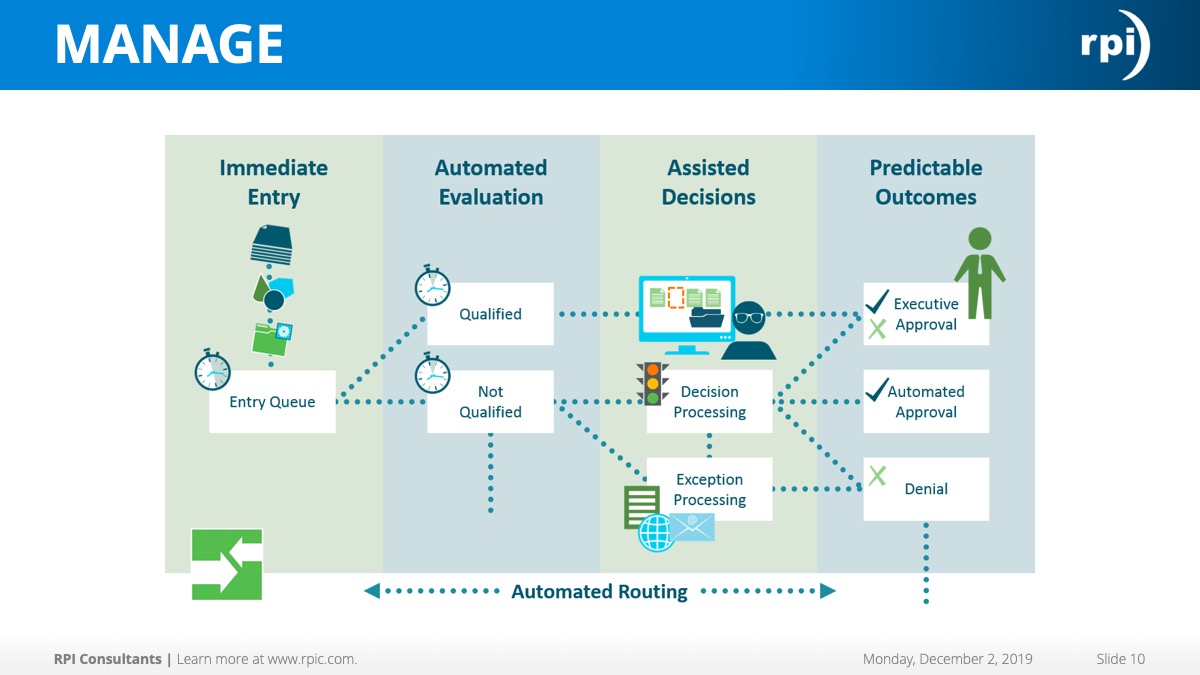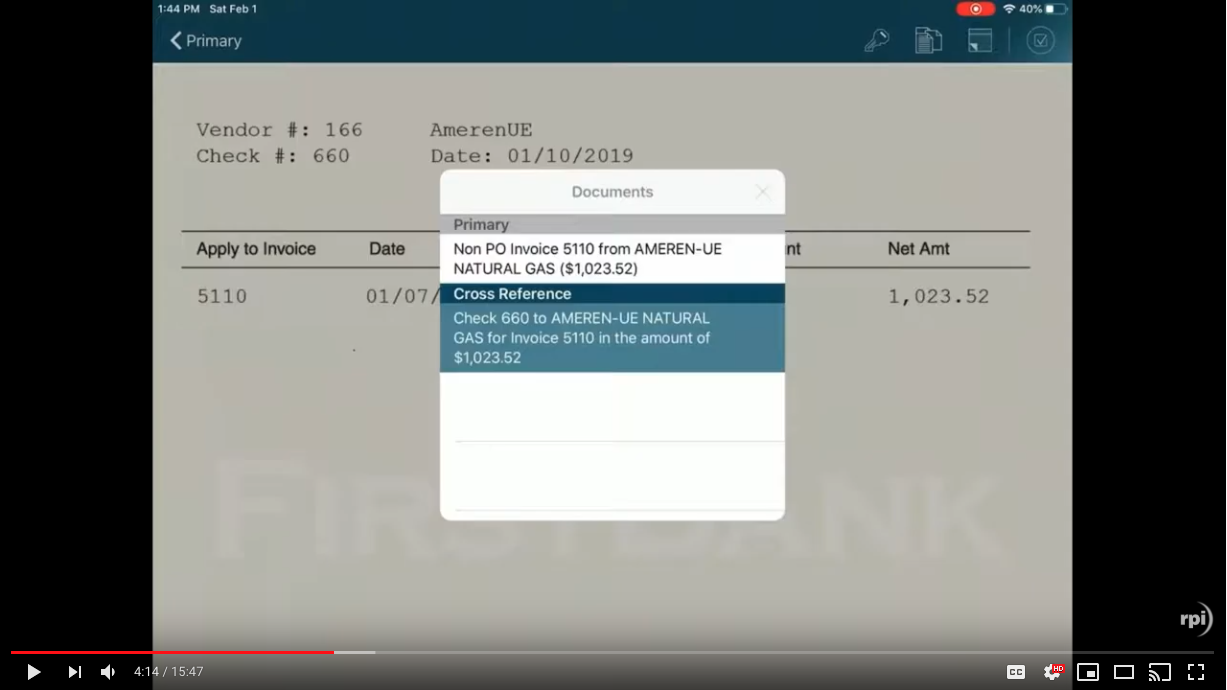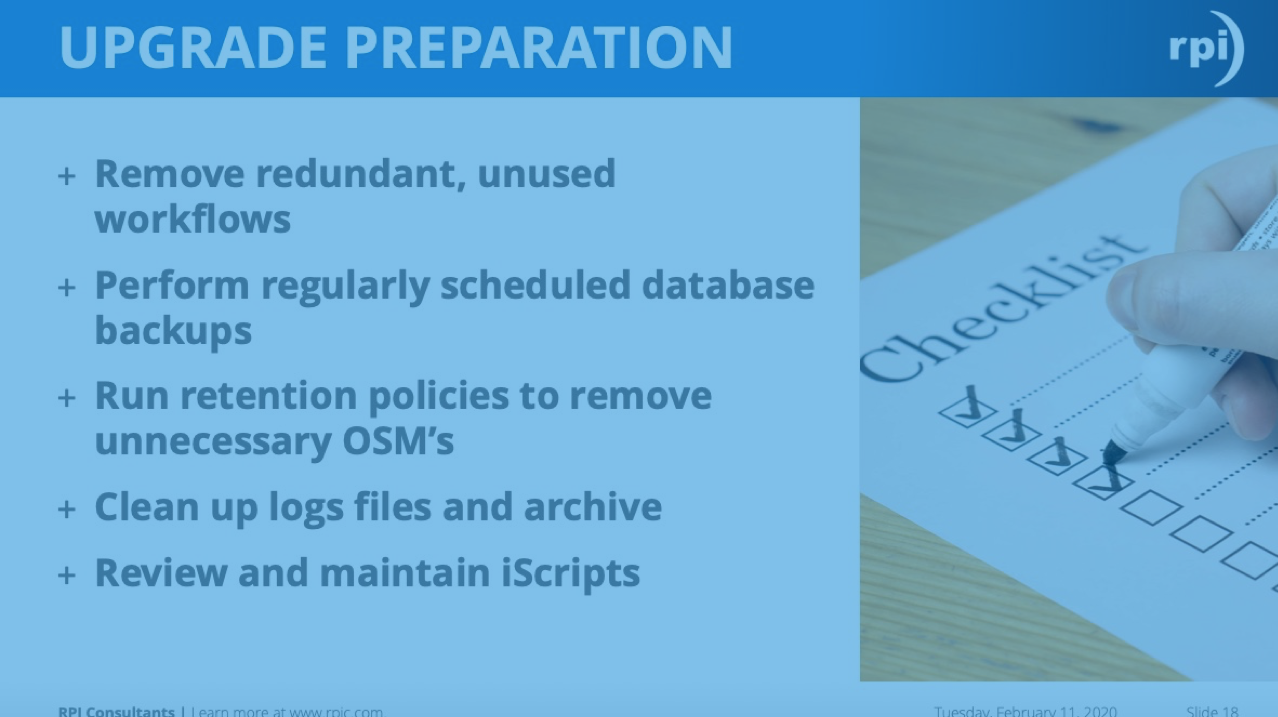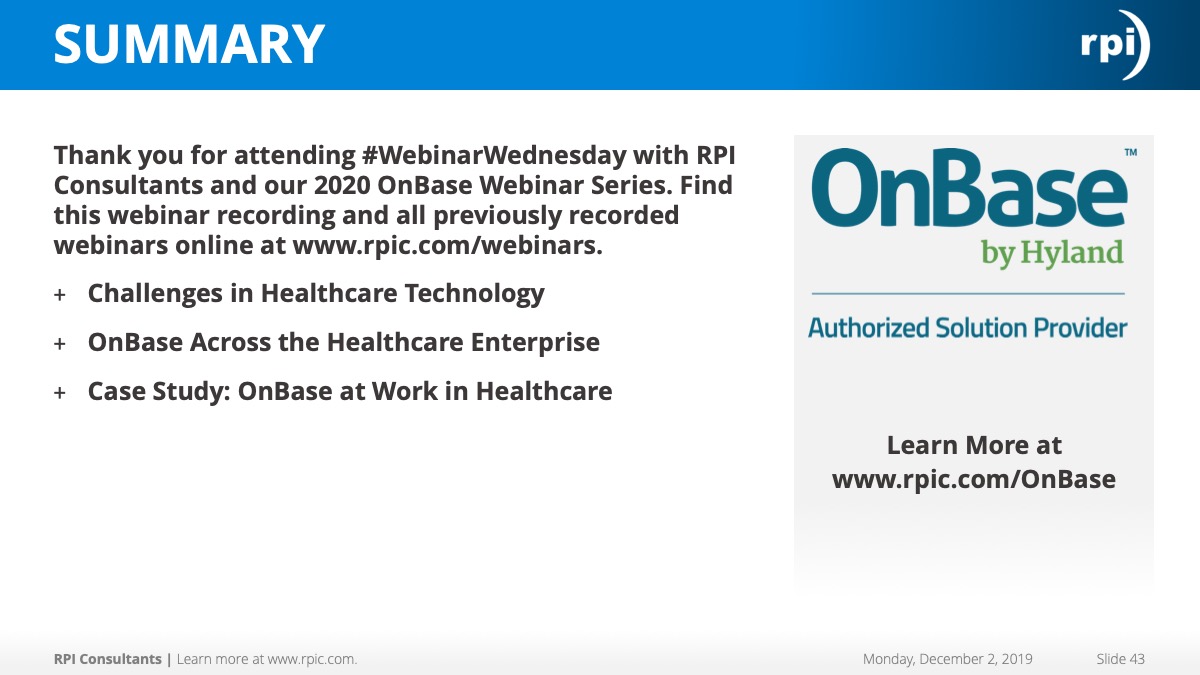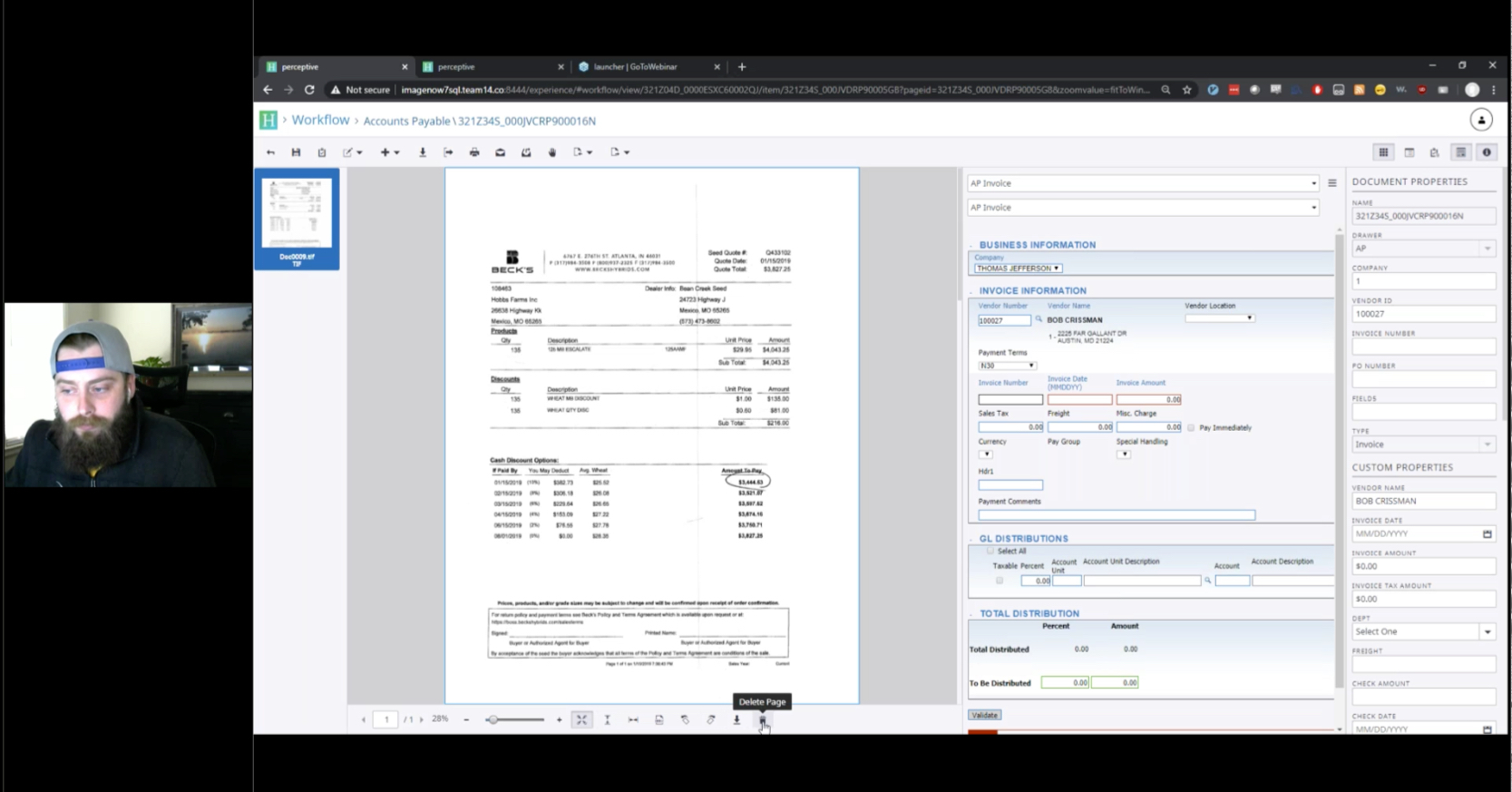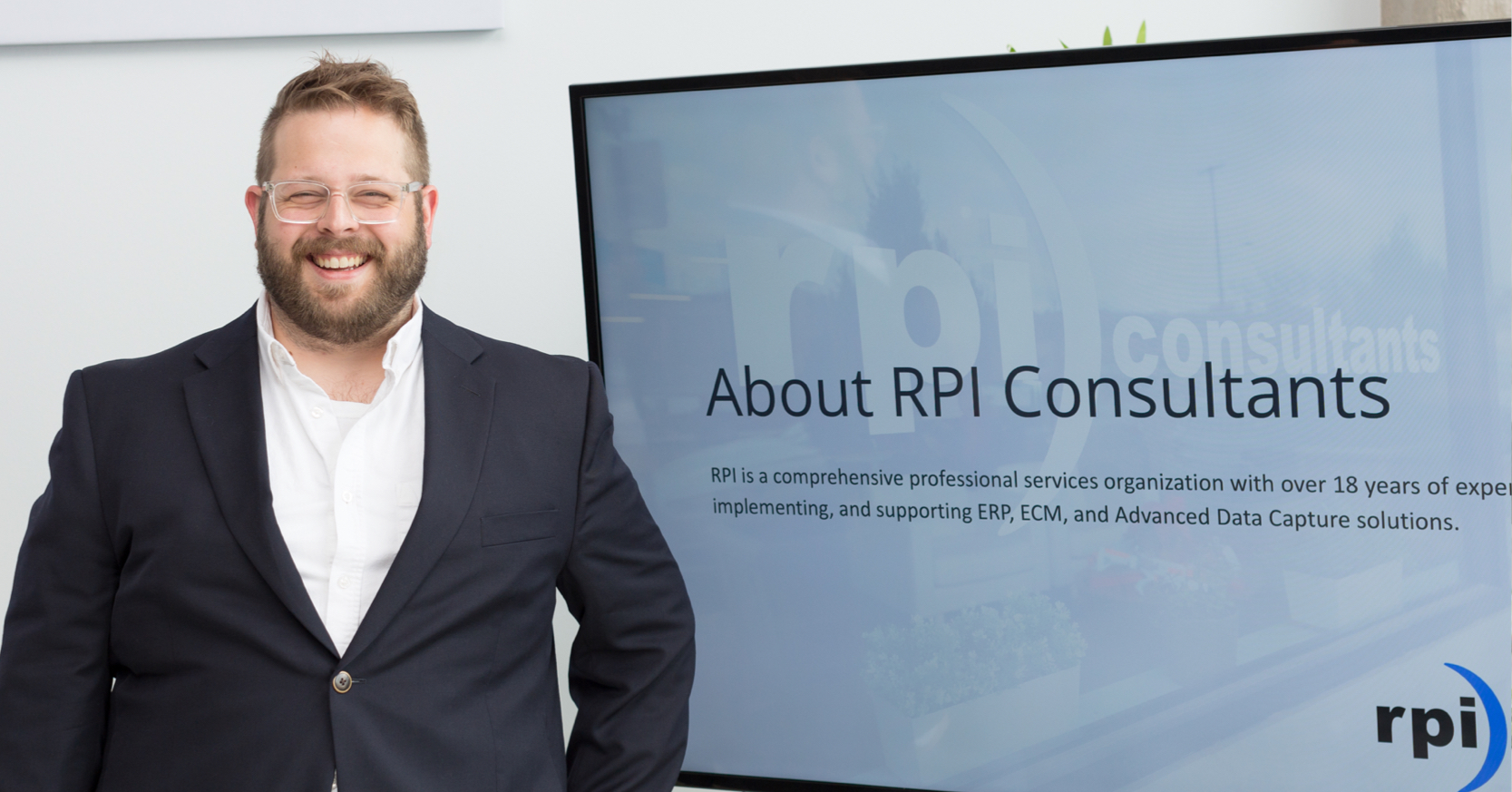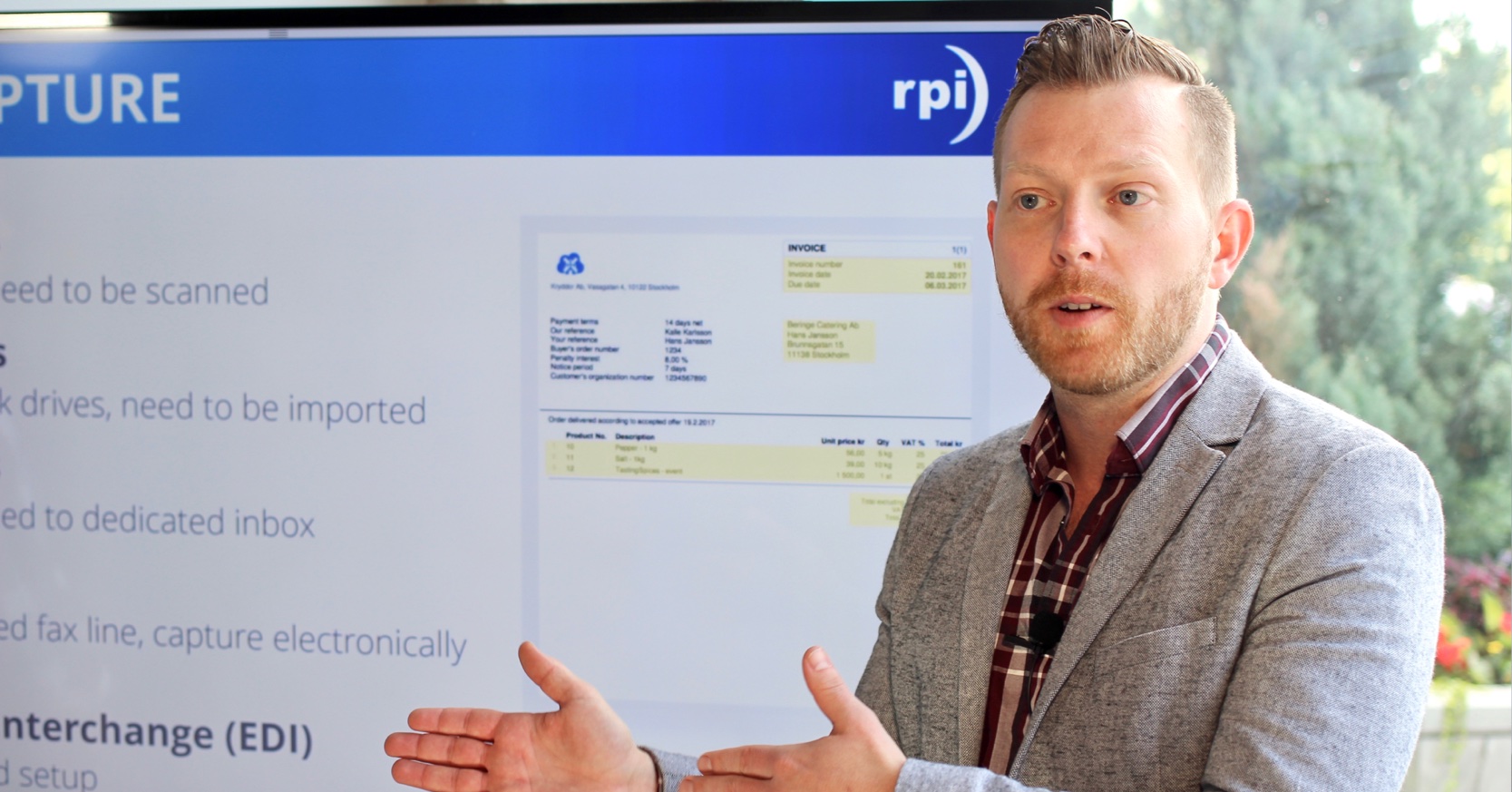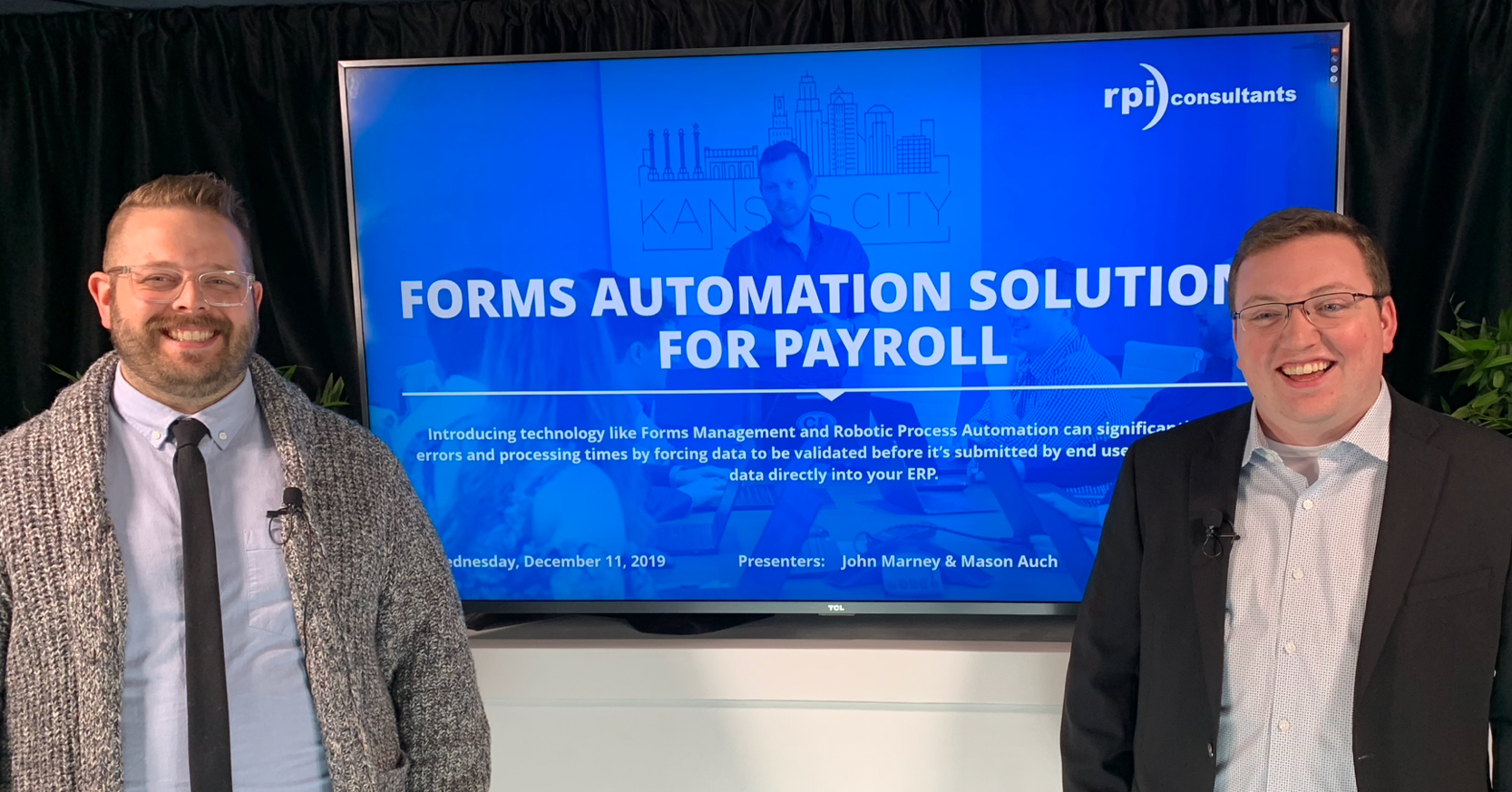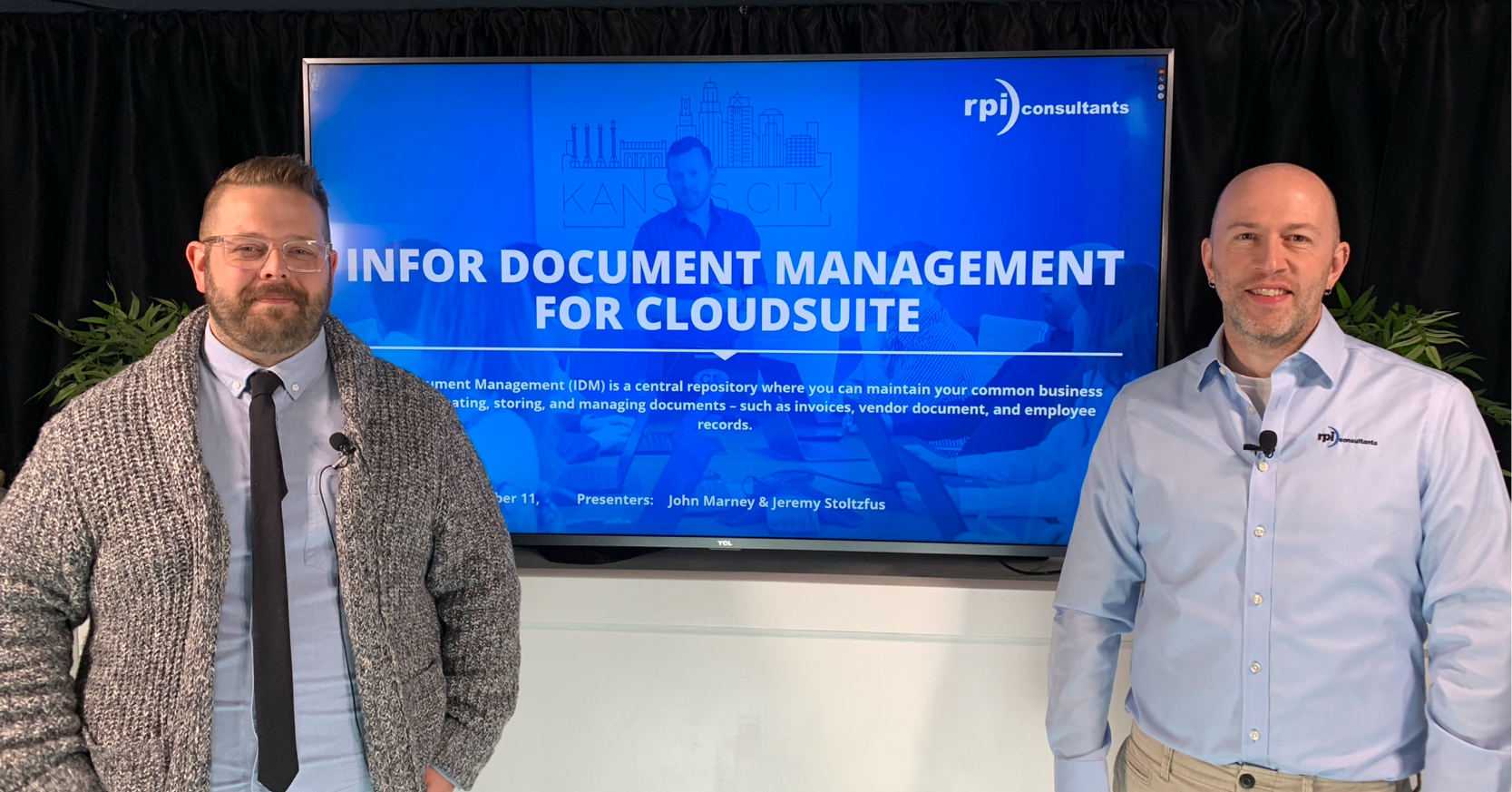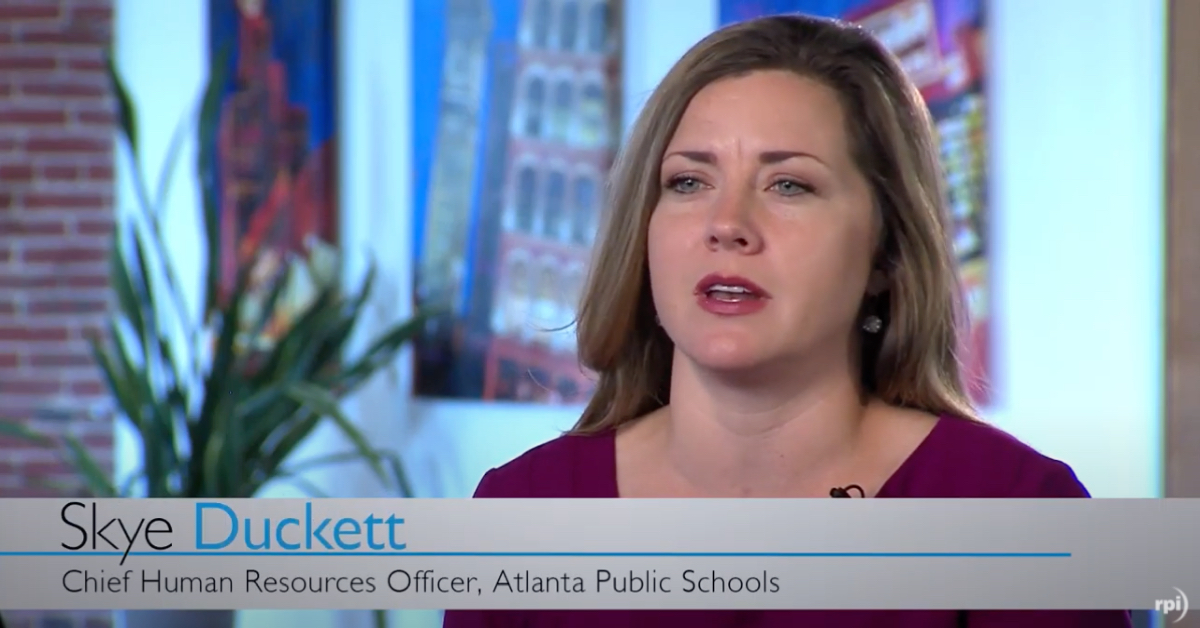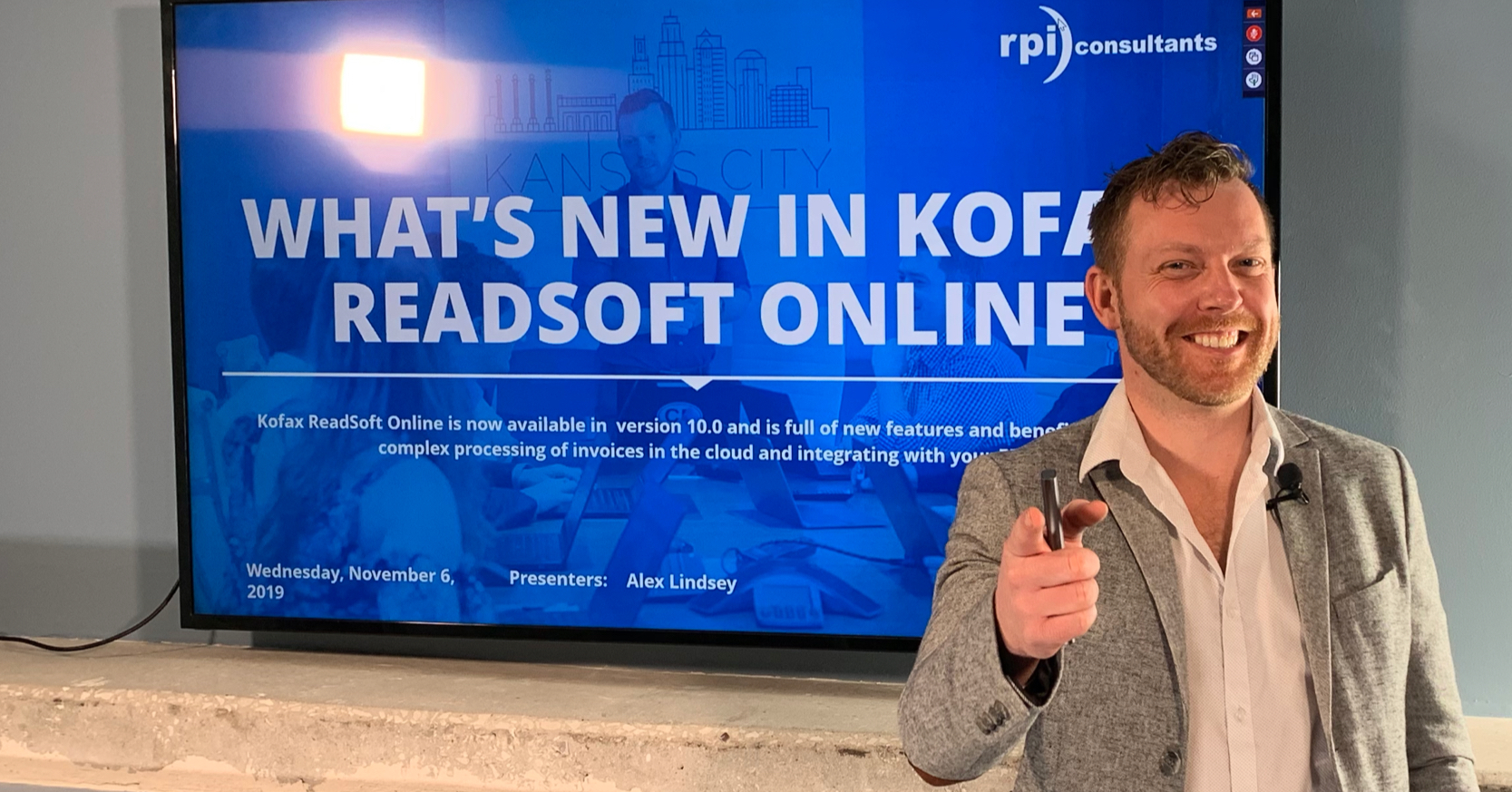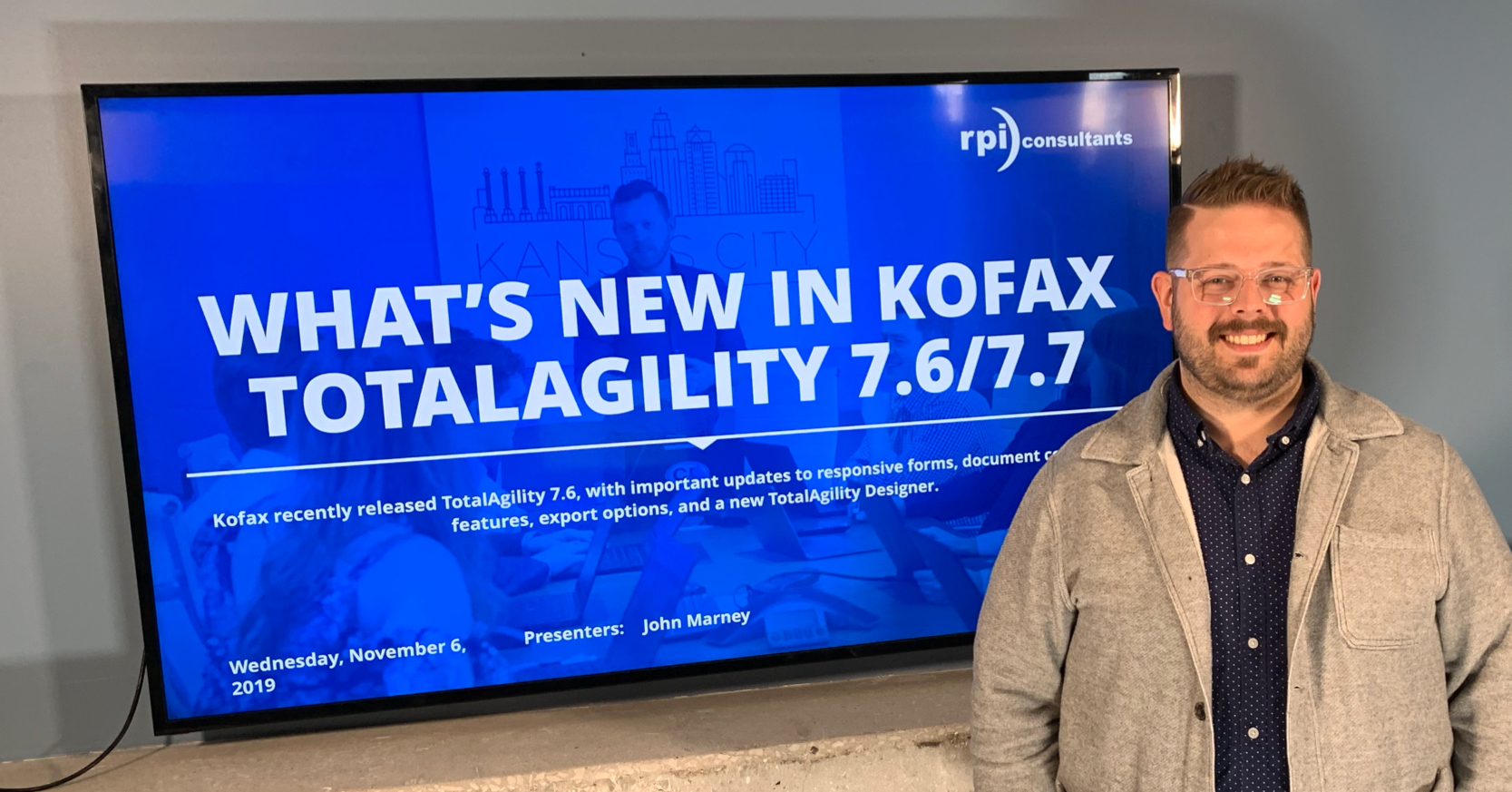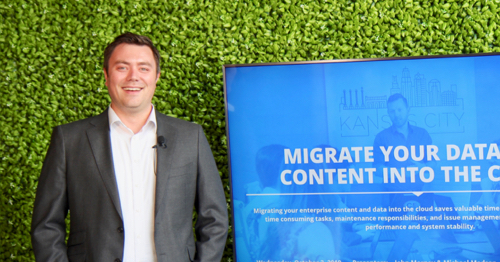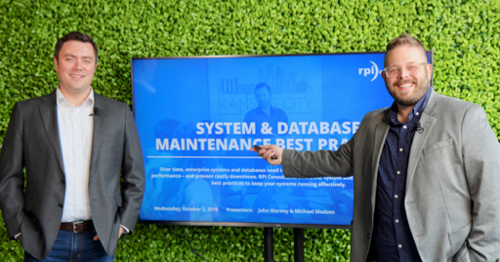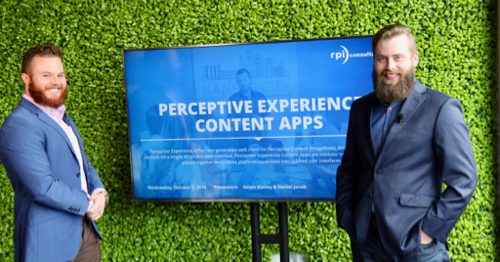John Marney:
Hello, and thank you for joining us once again on RPI Consultants Wednesday series. Today’s topic is “What’s new in Yoga?” Yoga is our proprietary lightweight HTML client. First a few housekeeping items. The webinar will be recorder and will be available on our YouTube and our website. That will be done swiftly here this week.
For everyone dialing in today, you will be receiving a copy of the slide deck via email so don’t feel like you need to screenshot everything. We do have a moderator standing by to take questions so feel free to use the GoToWebinar question window to submit questions, and if appropriate they’ll interrupt us in the middle or they’ll just save questions until the end.
And of course, you know, please if you have any webinar ideas, any topics you’d like to see covered across the spectrum of solutions and products that we work with, please don’t hesitate to offer some suggestions. Whether it be via webinar or just email us, we would love to entertain those.
Alright. Today we had a webinar over health care solutions this morning. Today of course, right now you’re watching the yoga webinar and at 3 central we have another webinar on technical and solution health checks that RPI offers.
On May 2nd, which is our webinar Wednesday next month, we have a webinar in the morning on outlook integration for OnBase. In early afternoon we have Kofax Products and Solutions. Its an overview of all of the different things that Kofax offers.
Then later in the afternoon we have planning your next upgrade for your ECM and OCR platforms. A little bit about me. My name is John Marney. I’m the manager of solution delivery here at RPI Consultants on the imaging team. Over 8 years of ECM and OCR design implementation experience. Majority of my experience has been in back office, solutions, accounts payable, human resources, often in hospitals or health organizations. I am OnBase installer and KTA essentials certified, and many people don’t know this about me, but I am actually a failed NFL wide receiver.
Alex Lindsey:
It’s true.
John Marney:
As is Alex I guess.
Alex Lindsey:
He failed very hard. My name is Alex Lindsey. I’m a senior solution architect here with RPI Consultants. I’ve got over 6 years working with ECM, Workflow products as well as OCR products. My focus is a lot on automation. So if you have solutions or processes in place and you have a software suite or you don’t, I’m here to help you work through scenarios that you guys could find to automate your processes and make it a little bit easier for your end users. I also specialize in accounts payable quite a bit so if you have questions about that, hit me up. Also I’m a big fan of whiskey and a novice ax thrower.
John Marney:
So what’s our agenda today?
Alex Lindsey:
Okay, so were gonna start off first by talking a little bit about our RPI Consultants. We are narcissists, so we just love to talk about ourselves. Were gonna talk about yoga. What it is. We’ve got previous slide decks, and previous presentations on what Yoga is as we were releasing it. And then were gonna really just jump into the new features. Show you what’s new and our latest release and how it can help you. Well also talk about our road map and what’s coming down the road. We also have a demonstration for you today. A video kind of highlighting some of the new features in particular the recording dashboard that were very excited about. Then well close up with a summary and open it up for questions with you guys.
So a little bit about ourselves. We are RPI Consultants we have about 80 full time Consultants, project managers. A lot of resources that can help you. A lot of different areas. We’ve got a very strong focus on the in four practice. The majority of the people that are based in Baltimore are focused on that practice, but we also have offices in Tampa and Kansas City, where we are broadcasting from as well. From our team, we focus on the imaging strategy.
So if you have ECM products or OCM products to basically extract data off of documents and stuff like that, we are the team to come talk to. But if you need business process analysis or any kind of managed services. If you have admins that are just neck deep with all the software products that you have, come talk to us, and we may be able to help you out.
John Marney:
We are partners with Hyland, Kofax, and Infor. Okay, so what is Yoga? Yoga is an HTML 5 again front-end client developed by RPI. It was originally built for ImageNow, our perceptive content, but really it is platform agnostic. Could work with just about anything. Probably the biggest thing to say about it is that it does not require anything other than a modern browser. So where as WebNow required Java, there are other products that have required Silverlight, you know, Shockwave Player. In fact, there’s not even, on the backside, there’s no Apache Tomcat required. Yoga Studio, to differentiate, Yoga Studio is the backend of Yoga. It is a node JS application server, which is very lightweight. Easy to download. Easy to install.
And it connects to Perceptive Content via calls to integration server. So quick overview of some of the functionality that Yoga offers. There are views for your documents folders and your tasks. You can open documents, and modify them, and route them inside your Workflow processes. Of course, you can apply annotations such as stamps and sticky notes, and for approvals you can even complete tasks. You can view eForms including the AP eForm, which is well known by many of the people viewing, I imagine.
You can retrieve documents via direct URL using document ID or meta data keys. And of course, the platform is easily customized to your specific needs without an expensive app development project.
Alex Lindsey:
So some of the other functionality overviews. So it is mobile responsive. So like John Mentioned, you just need an HTML 5 browser. So that includes your tablets, your phones, and other devices. Even Blackberries if you guys are still using those. There is again no Java dependencies so if you are a Perceptive customer using WebNow, that’s a big hooray for you guys. It doesn’t consume a user license on log-in as well, so that’s kind of a nice feature as well. You can deploy multiple instances of this pretty easily across different organizations or different departments for instance. And it can basically be accessed by the internet, intranet, or both. If you have a, and you’ll see in the reporting dashboard, if you wanted to give users the ability to run a report or see this report for instance, you can post that to your intranet, the link on your intranet site, and make that available to people.
John Marney:
Right. So what are some of the requirements?
Alex Lindsey:
So some of the requirements. Perceptive Content 7.1.5 or higher. Based on our setup right now that’s what we have. It can work on older versions like 7.1.3, but there are some limited features mostly to do with integration server and how that connection happens. You’ll also need Node.js. That is a free download. So you don’t have to worry about any extra costs associated with that. We will need a direct database to access for the Yoga Reporting Studio. That’s basically just to allow Yoga to go and read off of the Inow database table, to pull workflow processes, index values, items associated with your documents that are in workflow for instance, to kind of pull that information out so we can display that. Integration server with transaction packs is also required, and there is really no specific type license that you need for this.
John Marney:
Okay. So let’s go over some of the newer features, and then we’ll talk a little bit about what’s coming up. So, one of the new things that were really excited about is the Yoga Reporting Studio. This is a solution dashboard that includes some reporting features.
Alex Lindsey:
This is something that we’ve been working on for quite a while now. John and I have been working on it. We’ve got developers doing it. We’ve got a team of people doing QA on all the pieces as well. Really what it’s supposed to do is give you a snapshot of a particular Workflow process or processes. If you wanna point it to multiple you can. But really just give you a snapshot of where documents are in your Workflow. So, as you’re processing recruitment documents or onboarding documents for HR solutions, or if you are accounts payable and, I mean, invoice lifecycle is a big thing from the point of capture to the point when you actually post to your ERP. Like Peoplesoft or Lawson.
It’s important to know where your documents are, and maybe even more importantly, where they’re getting hung up so you can go and address those issues pretty quickly. To an extent, if you’re a perceptive content user, you can do that a little bit just from Workflow views or maybe some custom views that you can run, but it doesn’t really give you the capability to drill down as much as you may want to
So this Yoga Recording studio really kinda solves that issue, and gives you line of sight into your documents in their Workflow processes. You can also create and manage your own filters on views on Workflow. That’s a nice feature that we’ve added. You’ll be able to see that during the demonstration. And then for sticky notes, the sticky note annotations have been added as well. So you can continue to leave passive aggressive messages to your coworkers, but you can now do it in Yoga instead of the thick client. Document exports. You can actually export the document out of Yoga, to save locally. Then other small things like contextual field names. So instead of saying “Field 1, field 2, field 3” it can say “Invoice number” So it kind of gives more context to the documents that you’re viewing
John Marney:
Alright. So what’s coming down the pipe? Well, we’re absolutely going to be expanding the reporting studio functionality. We have a historical report that is going to be released in the next release. And then other ideas such as approvals drill down, or really like an AP dashboard where you can really see information on your top vendors, let’s say. And then well also be connecting with outside databases such as Intelligent Capture and ERP so that you can get a real end to end look at your business process. We’re adding indexing tabs. So inside of Yoga you’ll see tabs for different things like indexing information and forms. These tabs will allow you to somewhat eliminate the need for custom eForms and the custom development that goes into that.
For example, an HR indexing form, we could quickly build out. Then we’ll be building additional connectors for additional products. OnBase Box, if you haven’t heard of that, is a great ECM product, and Kofax Total Agility.
So, enough of our yapping at you. We’re gonna give you what you came for. Here’s the demonstration.
Speaker 3:
What you see here is the log in page for RPI’s Yoga software. I am going to log in with an account we have set up that self-authenticates off of our internal Perceptive Content environment. When I log in you will see a short loading screen. Yoga does cash a few things so that the user experience is very speedy, and responsive once the user is in.
You’ll see that the first thing that loads up is the Yoga dashboard. This is a new feature that we’re very excited about. This is giving us a quick snapshot look at our Workflow, and instead of going through integration server to fetch data, this is actually going directly to the database so we can formulate this data however we want.
To walkthrough what is on the screen here, there’s a list of Workflow ques. This is actually looking for documents in every que inside of the whole process. It only lists queues, though, that have documents inside of them. So there are a number of empty ques that don’t have any documents.
Next it lists the documents in the que, the total number of documents. Then the oldest document by created date. Then it provides a breakdown of those documents by day grouping. 0-5, 6-10, and 10+ days. Then the oldest invoice date in that queue. So this is an accounts payable in Workflow. However there are other columns we can add. Virtually any piece of meta data on the document can be added. For example, we have built this dashboard to also include the total invoice amounts in the queue, in the past. Next the next great feature of this dashboard is that we can actually click on the queue detail or the number of day breakdowns to get that information.
So if I look at my AP detail entry queue, and I click that, it actually will pop up another window showing the information from the document detail on the queue. Next I can go to the day breakdowns here and click on that, same thing for AP detail entry, and see just those documents. A large number of documents in the queue, this is gonna be very beneficial to be able to quickly see a snapshot of the information you wanna see. Generally the oldest documents in a queue. This is not limited to any kind of view amount. A view is typically limited to 500 maybe as much as 2000 documents. This will actually pull back every single thing in a queue. Other great feature is that I can actually use the button up here “Display all Data” to see every single row of data that is going into this table.
So if I click this “Fill Data” it will actually show me, and this is paginated, which I can increase this, but 10 pages or 10 results per page shows me every single thing that’s inside a Workflow that’s configured to show in this dashboard. And even better, let’s say I wanna actually search through all of this data. It says there’s 44 entries. So I’ve actually got a column set up over here to indicate who the current approver is if the document is in approvals. So let’s say I wanna see everything that the current approver AP approver 1, which is an approver account I have set up. I start typing and it quickly filters down all the results to show me this document row here. I can see that I have a couple different approvals pending for these two specific invoices.
So, and then if I back out that search criteria, I can actually export all of this data to CSV, which then allows me to open that inside of Excel, and filter and pivot that data to my heart’s content. We don’t wanna try and recreate every cell feature so we just give you the ability to take this data and throw it into Excel.
Now this is just one example of how the Yoga dashboard can be used; however, there’s a lot of different information and columns that we can add to this, and other data that we can report on. So really this can be catered to your environment and your specific use case.
The next feature I’d like to show you are our views and filters now I’m going to expand this views button over here. You’ll see that we have the accounts payable view that was built inside of Perceptive Content listed here. This view will pull back all of the invoices available up to the maximum number of entries. Just like inside of the thick client. However, now inside of Yoga we can build filters to allow us to quickly search through this data. I have a filter saved here called “Computer World Invoices.” This is searching via vendor ID as if I quickly needed to recall these documents often in my day to day. So I click on that and hit go, and it retrieves all of the documents that match that information. In this case it’s this vendor id field, which is field two, is equal to 1003.
And from here of course I can review the information on the line items. I see that one of these documents is in tasks pending, which I know to be inside of approvals, so I can actually open the document and review the information. I can also save or update these filters. So let’s say I wanted to change this to be for a custom property, a vendor name, and I wanted it to be equal to Comtron, another vendor that I have to look for frequently. I hit go to make sure that my filter works, and look at that, it retrieves 6 entries, another series of invoices at different stages inside of my accounts payable process. I’m gonna go ahead and save this as a new filter as Comtron invoices. Create it, and it is now referenceable over here on the left, underneath accounts payable.
The final thing I’d like to demonstrate is the capability to perform your Workflow actions inside of Yoga. I’m gonna close up views here, and go over to my workflows. Hit “Expand Accounts Payable” and the first thing I’m gonna do is check my header entry que for any data that needs to be entered. First thing I’m gonna do is open up this Comtron invoice here. You’ll see I have my thumbnails over on the left side, my image here in the middle, and then my properties here on the right, including my custom properties that follow. I have another tab here for my forms, and of course we have our AP eForm, which loads up. I can perform all my data entry here. Now this ones already filled out as if it had gone through perhaps my OCR. I can of course enter additional comments, or make any changes that I might need to. I can click validate, which will perform validation checks already built into the form. For example, if I don’t have an invoice amount, it’ll tell me that’s missing.
And after I’ve validated everything i will choose to save and route. So this will actually route the document to the next step in the Workflow process. Okay. Then you’ll see that it has disappeared. Then maybe I wanna hop over to my AP exception que to review an exception document. I’m going to open up this sticker spine. Invoice. And I’m going to review the properties on it. I know that the wrong P.O. number is listed here on this document as I use my magnifying glass.
So I’m actually gonna leave a sticky note, and I might leave the note that says “P.O box is invalid. Please provide correct P.O number.” Then I add that, and I’m actually gonna move that sticky note up there. I’m actually gonna send this over to our purchasing department so they can provide the correct P.O. number. Click save and route, and send to purchases.
So this has been a quick demonstration of the major functionality of Yoga. I’m not gonna get to everything. You can also approve or reject tasks, perform approvals. You can export documents. There’s a lot of other functionality here. If there’s any specific functionality you are looking to see a demonstration of, please reach out and we’ll set up a demonstration for you. Thank you.
John Marney:
Alright. That’s our demo. Again if you have any questions that came out of that demo feel free to submit them via the GoToWebinar question window, and we’re ready to take questions now.
Speaker 3:
Alright, and as a reminder, if you guys have questions please submit them through the go to webinar interface, and I can go ahead and ask them here. So our first question: “If an approver puts their approved stamp on an invoice image, do they have to save the document before going on to the next one?”
John Marney:
That’s a great question. That was actually a design decision that we made that in Perceptive, right now, there’s generally a lot of user confusion between save and route, and what does what, and actually just closing the document. So you may have noticed in our demonstration that we went with a little bit different layout and user interaction. So there’s a cancel button, which means that we’re gonna back out of this document without saving any changes. There’s a save and close, and there’s a save and route so that you can reduce the number of clicks necessary. Great question.
Speaker 3:
How are user permissions handled at this time, or are they all pulled from Perceptive?”
John Marney:
Yeah. So every call we make is verified using the user context so we can identify whether we’re using the appropriate permissions or not. That said, the reporting dashboard is right now, sort of, permission agnostic. It’s something you can control who has access to it, but if a person has access to it, they can see that data.
Speaker 3:
You mentioned the Indexing tab. How can we use that tab in other areas?
John Marney:
I think there are a lot of ways. So anywhere where an eForm is used for document separation, document indexing right now, or you would like to use in the future, whether that’s human resources to index incoming employee files, or a higher education solution indexing student files, there are a lot of opportunities for the indexing tab.
Speaker 3:
Alright, that’s it.
John Marney:
Alright. Well thanks for joining us, and just a few more things for you to consider is if you want more information on Yoga or RPI in general, these are some links. Of note is the Yoga SMS webinar, which we did a few months ago. Yoga SMS is an Approvals Workflow on the text messages. And then we also have our knowledge base and a number of our other recorded webinars available on the website. So thanks for joining us, and everyone have a good day.
Speaker 3:
Thank you guys.











